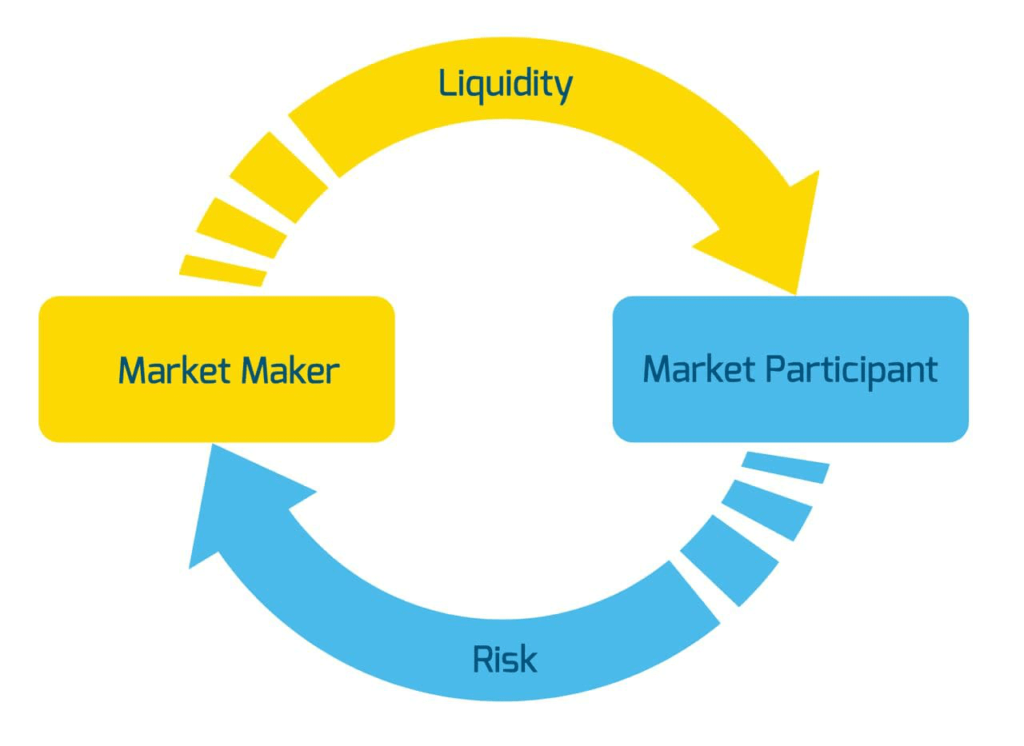Market-making arbitrage is a high-frequency trading (HFT) strategy that involves acting as a liquidity provider in financial markets. In this strategy, HFT firms continuously place both buy and sell orders for the same asset, aiming to profit from the bid-ask spread—the difference between the price at which they are willing to buy an asset (bid price) and the price at which they are willing to sell it (ask price). By constantly adjusting their bid-ask spreads based on real-time market conditions, HFT firms generate profits from the price discrepancies and facilitate smoother trading for other market participants.
Example of Market-Making Arbitrage:
Let’s consider a hypothetical scenario involving a popular tech company’s stock, ABC Inc. The current market for ABC Inc. stock looks like this:
- Bid Price: $100.00 (The price at which buyers are willing to purchase ABC Inc. shares)
- Ask Price: $100.10 (The price at which sellers are willing to sell ABC Inc. shares)
In this scenario, the bid-ask spread is $0.10 ($100.10 – $100.00), representing the potential profit that can be earned by a market maker. As a liquidity provider, the HFT firm places both a buy order at $100.00 and a sell order at $100.10.
Now, let’s assume that a retail trader wants to purchase 100 shares of ABC Inc. stock. They place a market order, meaning they are willing to buy at the best available price in the market. The HFT firm’s sell order at $100.10 matches the retail trader’s market order, and the trade is executed.
Shortly after, another trader wants to sell 50 shares of ABC Inc. stock. They place a market order to sell at the best available price. The HFT firm’s buy order at $100.00 matches the second trader’s market order, and the trade is executed.
In both transactions, the HFT firm has profited from the bid-ask spread:
- Profit from the first trade: (100 shares * $0.10) = $10.00
- Profit from the second trade: (50 shares * $0.10) = $5.00
By providing liquidity to the market and continuously adjusting bid-ask spreads, the HFT firm not only earned a profit but also ensured smooth execution for the retail traders.
It’s essential to note that market-making arbitrage relies on high-speed technology and automated algorithms. HFT firms need to have low-latency access to market data and fast execution capabilities to react quickly to changing market conditions and maintain competitive bid-ask spreads.
While market-making arbitrage is generally considered a low-risk strategy, HFT firms must manage potential risks, such as sudden market volatility and system outages, to avoid significant losses. Moreover, HFT activities, including market-making, are subject to regulatory oversight to ensure market fairness, transparency, and integrity.
In conclusion, market-making arbitrage plays a vital role in enhancing market liquidity and efficiency. By acting as liquidity providers, HFT firms help narrow bid-ask spreads and contribute to smoother trading experiences for other market participants. However, success in this strategy requires sophisticated technology, efficient risk management, and adherence to regulatory guidelines to navigate the dynamic and competitive landscape of financial markets.
